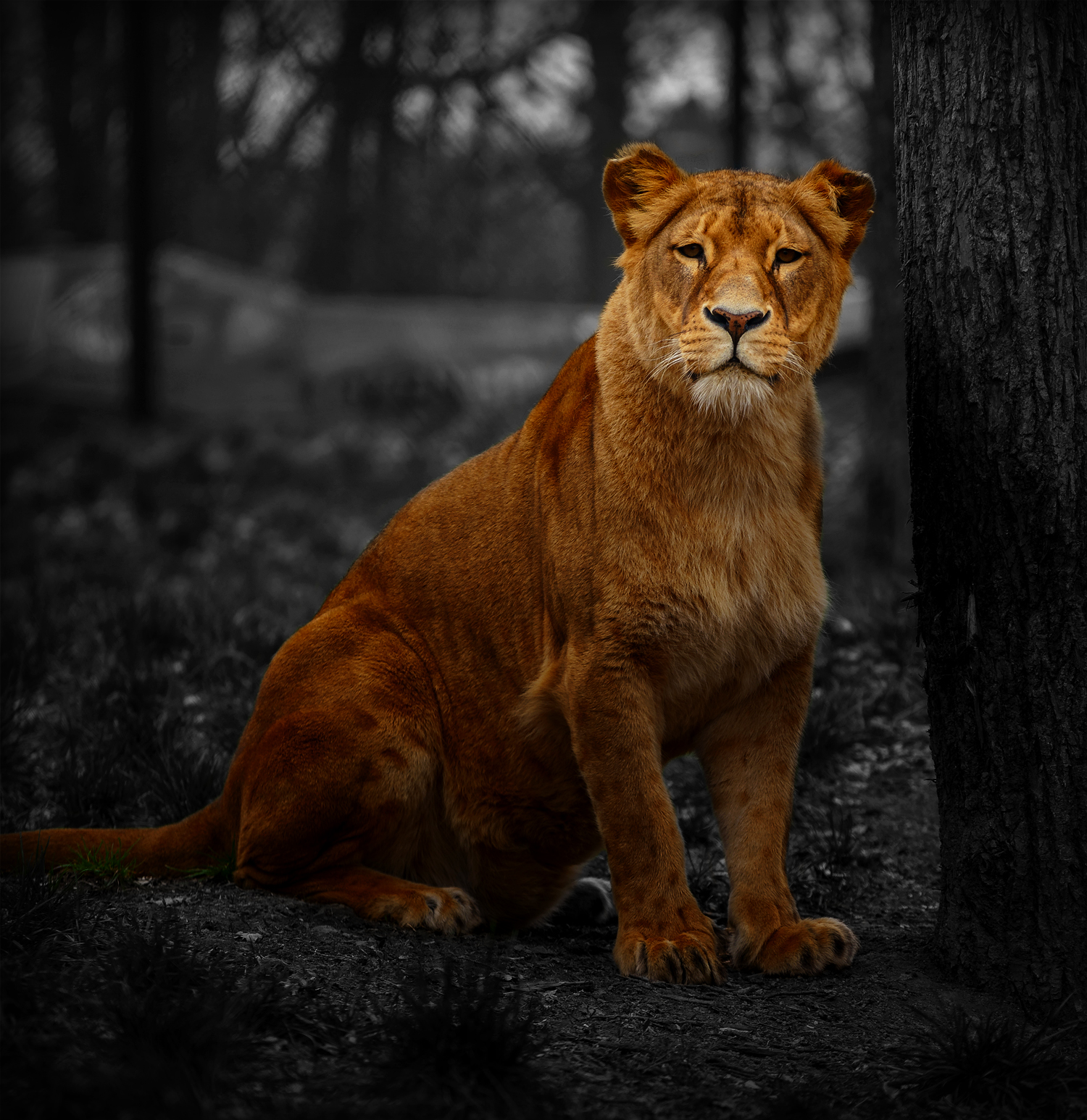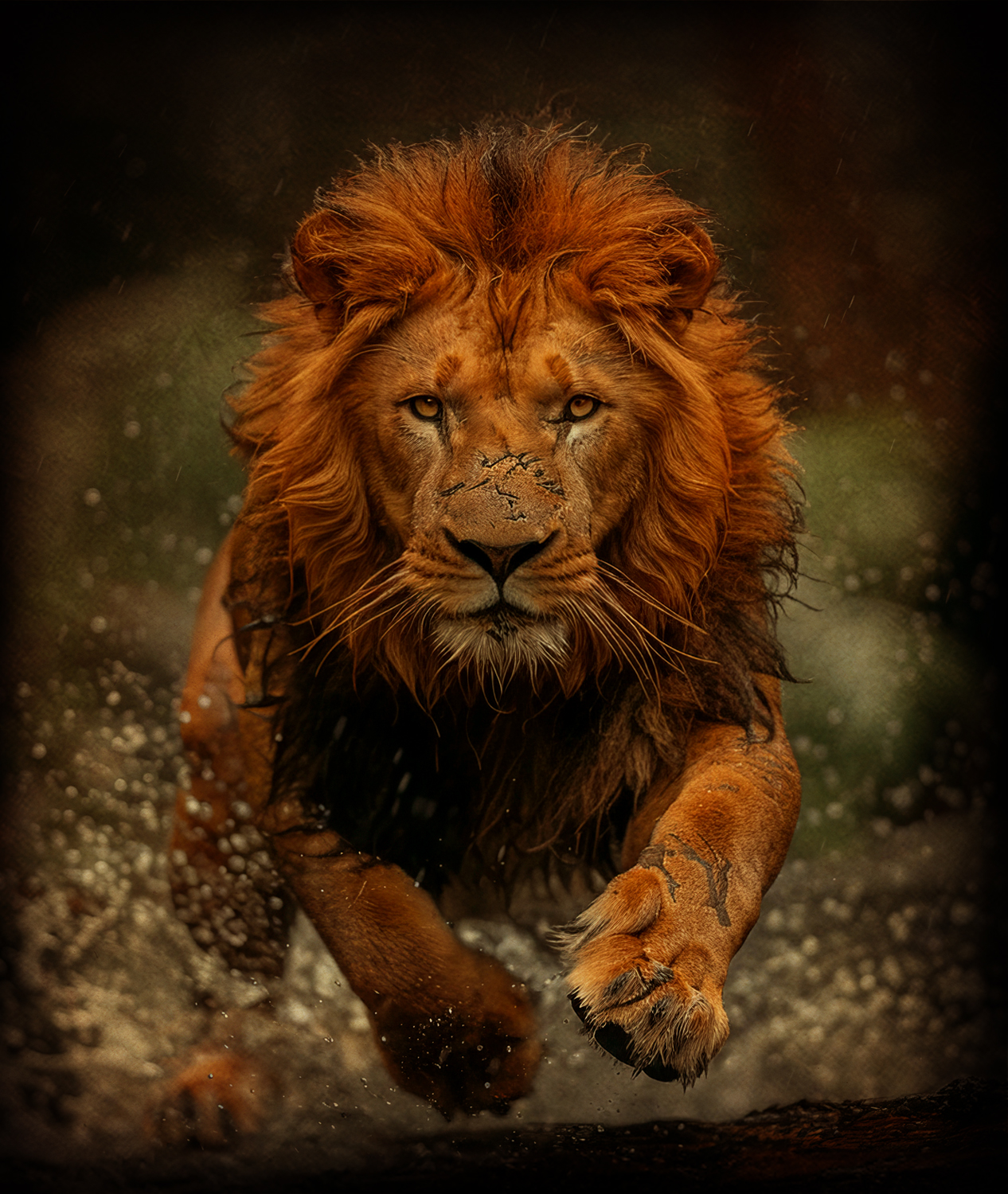Hey Travellers, if you wanna know about Gir National Park then you’re at the right place. To start with, Gir National Park is a wild area which is also known as Gir Forest or Gir Wildlife Sanctuary. It’s a famous wildlife sanctuary in Gujarat which is in India. This sanctuary is famous all over the World, especially among wildlife enthusiasts for sightings of Asiatic Lions. This is the only habitat apart from Africa where one can spot an Asiatic Lion.
bird species
species mammals
Tiger population
This park covers a huge area which is filled with a wide variety of flora and fauna that attracts people to come here. Not only lions, but people can also spot leopards, deer, and other wild animals in this wild area. Locals also believe that if Asiatic lions were not spotted here, then this park would have been famous for its 425 bird species. The lion population of this park is 523 while the tiger population is 300. With this large population of wild animals, it’s a must-visit place for wildlife enthusiasts. Apart from these animals, the Gir National Park Gujarat is also home to two different species of deer, encompassing 40 species of mammals and 425 species of birds.
This wild area was established back in 1965 and covers a huge area of 1,412 square kilometers. It is situated in the Saurashtra region of Gujarat. This park has a different variety of flora than other parks which lets Asiatic Lions live here. The flora of this scenic wild spot consists of dry deciduous forests, grasslands, and rocky hills. Various rivers such as Hiran, Shetrunji, Datardi, and Raval can be found here which are important to provide water for the animals living inside this park. This park was made for the conservation of Asiatic Lions, however, other animals along with different flora can be seen here.


Gir National Park's history dates back to the 19th century. So, let’s rewind to the 19th century. Back then, hunting was very popular and was considered a sport among the royals in India. At that time, the Nawabs of Junagadh ruled over the region where Gir is located. They were ruling that area and were passionate hunters. At that time, a lot of Lions were there in Gir and those were the prized targets for royals. The Royals used to invite the British colonists for hunting expeditions. As a result, by the end of the 19th century, the lions were almost on the brink of extinction due to excessive hunting and habitat loss.
Here’s where the history of Gir National Park took a twist. In the early 20th century, the Nawab of Junagadh at that time realized that the lion population was declining day by day, and thus he decided to ban hunting and took measures to protect the lions. He was a hunter but turned into a conservationist!
After independence, the Indian government took control of the park and used more conservation techniques. Back in the year 1965, this area was established as a wildlife sanctuary and the main aim was to create a safe haven for the Asiatic lions. After that, along with Asiatic Lions, several other animals like leopards, jungle cats, honey badgers, chital, nilgai, deer, etc, and a lot of birds with reptiles and insects were conserved here. Finally, after a decade in 1975, Gir was officially declared a national park, covering around 258 square kilometers. Making this spot a national park was important for giving the Lions and other wild animals a secure and safe habitat to live in.
Now Gir National Park Gujarat is proof of the good conservation of Asiatic Lions with around 674 of them roaming around. Furthermore, it’s a biodiversity hotspot with over 40 species of mammals and 425 species of birds. This success is attributed to dedicated efforts by forest officials, local communities, and conservationists.
Somnath is a popular tourist attraction near Gir among Hindus and they consider it as a pilgrimage site. This temple is located just at a distance of 56 km from Gir and if you’re coming to Gir then you should definitely go to Somnath to take blessings.
DetailsAs the name says it’s a fort that is located around 76.5 km from the park. It was built back in 319 BC by the Mauryan emperor Chandragupta and it has been rebuilt 16 times over the last 800 years.Several materials are used to
DetailsThis museum was founded back in the year 1947 and it’s famous among people for its collection of silver thrones, gold-embroidered carpets, silver art objects, etc. The hall of this museum represents the royal assembly
DetailsThese hills are around 80 km from Gir National Park and these hills are popular among Hindu and Jain communities for pilgrimage. The pilgrimage of Girnar needs thousands of steps to reach the top and in between one can
DetailsThis sanctuary is famous among many birdwatchers because it is the largest water bird sanctuary in India. This sanctuary was established back in 1969 and from that time it's a popular weekend getaway that is located close to Gir National Park.
DetailsThis waterfall is around 120 km from the park and people need to track a little bit to reach here. One can enjoy nice views and also you can see the rural area of Gujarat. This one is a popular tourist attraction near Gir that is known for its multi-level
DetailsGir National Park attracts tourists from all parts of the World as it has more than 400 plant species. This park is the largest dry deciduous forest in western India. In the easter area of this park, one can easily find Teak which covers nearly half of the forest's total area. Other species that are found in this big park include Acacia, Charal, Siris, Amli, Umro, Ber, Kharanj, Jamun, Babul, Vad, Kalam, Flame of the Forest, Zizyphus, Tendu and Dhak.
This park also has broad-leaved trees that help provide a soothing shade in this park. Because of afforestation, casuarina and Prosopis have been planted along the coast borders of gir which are important for this habitat.
Other than this, the forest of Gir also consists of Peepal, acacia, neem, some wild flowering shrubs, and all forms of grasses from taller to smaller. Also, wide range of bamboo species can also be found in this scenic park.
Out of them all, the main flora that is found here in large numbers includes Teak, Ber, Khair, Hermo, Dudhlo, Ashitro, Modad, Desi bevel, Sadad, Timru, Khakhro, Dhavdo, Saledi, etc.
This park is a huge space and around 40 species of mammals and 425 species of birds call this area home. Asiatic Lions are famous all over the World and they can be found in Gir National Park Gujarat. Because of the sightings of Asiatic Lions, a lot of people from different parts of the world like to visit Gir National Park. Apart from Africa, this is the only place where one can see Asiatic Lions. Leopards are also found in great numbers in this huge park. Apart from these two, this park is home to 38 species of animals, 27 species of reptiles, and more than 300 species of birds.
Mammals of this park include Asiatic Lions, porcupines, hares, jungle cats, black hyenas, Indian leopards, Indian mongooses, golden jackals, chital, four-horned antelope, nilgai, sambar, wild boar, chinkara, striped hyenas, Bengal fox, Indian gray mongoose, honey badger, ruddy mongoose with many more.
Some of the common birds that are found here are Dalmatian Pelican Pelecanus Crispus, Greater Spotted Eagle Aquila clanga, Indian Skimmer Rynchops Albicollis, Oriental White-backed Vulture Gyps bengalensis, Greenish Warbler, Pigeons, Griffon Eurasian Predator, Wavering Hawk Eagle, Bonelli's Eagle, Indian Pitta-Quail, and Woodpeckers like the Crested, Treeswift, Pygmy woodpecker and Long-billed Vulture Gyps indicus with many more.
Some reptiles also call this park a home such as Common Keeled Skink, Snake Skink, Marsh Crocodile, Flap Shell Turtle, Indian Chameleon, Common Sand Boa, Indian Star Tortoise, Indian Wall Lizard, Common Garden Lizard, Fan Throated Lizard, Monitor lizard, Hare Tortoise, Red Sand Boa, Common Monitor Lizard, Marsh Crocodiles, etc.
Out of them all, the main fauna of this park that are found in large numbers include Lion, Leopard, Chital, Fox, Sambar, Civets, Bule bull, Jackal, Crocodile, Chaushinga, Chinkara, Wild Boar, Langur, Hyena, Mongoose, Indian pitta, Tawny eagle, Malabar whistling thrush, Crested serpent eagle, King vulture, Orange-headed ground thrush, Paradise flycatcher, Black-naped flycatcher, Pelicans, Peafowl Bonelli’s eagle, Crested hawk eagle, Painted storks, etc.
Gir National Park remains open from 16 October to 15 June every year, and it is closed in monsoon season. Many people like to visit this park during hotter months because wildlife sightings are better. People who can bear the heat like to visit this park from April to June because many wildlife can be spotted near water bodies.
But, the best time to visit this park is during the winter months from December to March. This period is considered the best season because the weather remains pleasant during these months of the year. Also, many migratory birds can also be spotted and people can enjoy a nice ride without bearing the heat. Lions also remain active and wildlife spottings are better. Make sure to keep a water bottle, and light jacket during cooler months when going for a morning safari in this scenic park. Also, the park looks beautiful because many flowering green plants grow this season after monsoons.
Gir National Park’s forest department only allows gypsy safari to go inside the park. One can enjoy a gypsy safari ride in this huge park in Gujarat.

Gypsy Safari:
This is the only available option to enjoy a safari in Gir National Park. This safari is done in
gypsies and they will take you deep inside the Jungle to enjoy sightings of Asiatic Lions along
with other wild animals.
Two kinds of Safaris are available, A and B - In category A, 4 seater, 6 seater and 8 seater
gypsies are there, you can choose the one that you like. In category B, only a 6-seater gypsy is
available that is a little bit
older version but not older than the one prescribed under the scrapping policy of the Government
of Gujarat to drive old vehicles.
Gypsy Safaris is a good vehicle and it’s smaller in height that lets you see the lions and other animals from a close look. They can also go on narrow paths inside the Jungle ensuring better sightings. To enjoy a safari in Gir, make sure to make a Gir National Park Booking in advance before the travel date on your preferred timings. Slots are not easily available as a lot of people come here every year and most of them make online bookings in advance before the travel date. Don’t think that you’ll go there and after that you can get the tickets, to avoid disappointments, make sure to book your thrilling safari in advance. One thing that is important to remember is that a maximum of 6 adults along with a child (between 3-12 years) are allowed to go on a ride inside a safari.